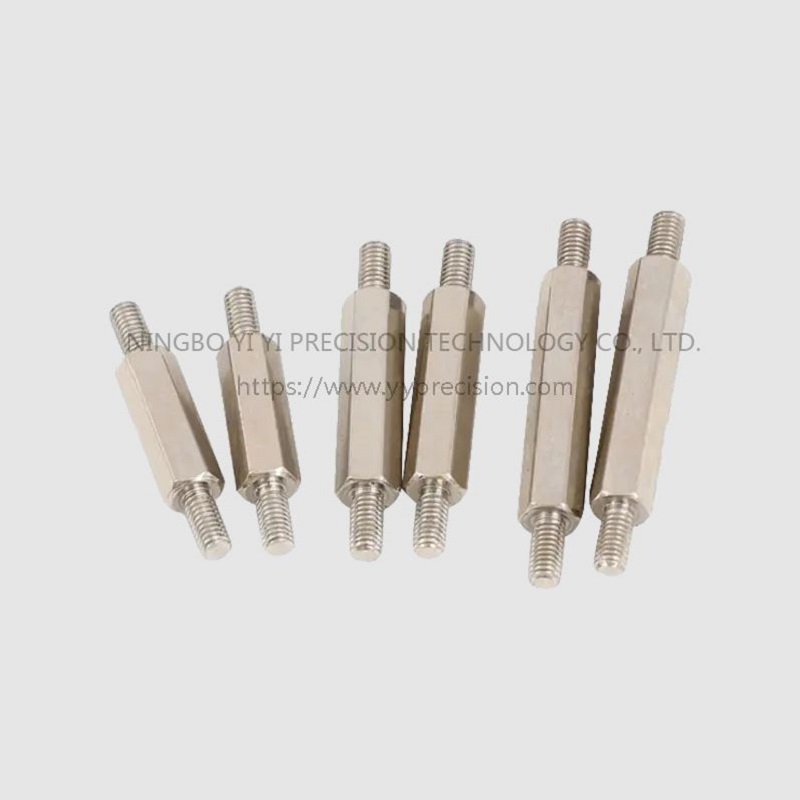Maintenance for
hexagonal pillar screws is generally straightforward but essential to ensure their continued performance and reliability in various applications.
Visual Inspection: Regularly inspect hexagonal pillar screws to identify any signs of wear, corrosion, or damage. This can be part of routine equipment inspections.
Tightness Check: Ensure that the screws are securely fastened to their intended torque specifications. Over time, screws may loosen due to vibrations or thermal expansion/contraction.
Corrosion Prevention: If the screws are exposed to corrosive environments, such as outdoor applications, consider using screws made from corrosion-resistant materials like stainless steel or applying appropriate coatings to protect them.
Cleaning: In dusty or dirty environments, periodic cleaning may be necessary to prevent contaminants from interfering with the screw's functionality. Use a suitable solvent and a soft brush or cloth to clean them.
Thread Lubrication: Applying a lubricant to the threads can help reduce friction during installation and removal, making maintenance tasks easier and preventing galling or thread damage.
Replacement: If a
hexagonal pillar screw shows signs of significant wear, damage, or if it can no longer provide the required spacing and alignment, it should be replaced promptly.
Environmental Considerations: In extreme environments, such as high-temperature or high-pressure applications, consult the manufacturer's recommendations or industry standards for specific maintenance guidelines.
Thread Locking: In applications where vibration or movement can cause screws to loosen, consider using thread-locking compounds to prevent unintended loosening. Be prepared to break the thread-locking compound if disassembly is required.
Torque Verification: Periodically verify that the screws are still tightened to the correct torque values, especially in critical applications. Torque can change due to environmental conditions and material relaxation.
Insulation Inspection: If hexagonal pillar screws are used for electrical insulation, check that the insulating properties are maintained. Damage or contamination could compromise the insulation, leading to electrical issues.
Documentation: Keep records of maintenance activities, including inspection dates, torque values, and any issues discovered. This documentation helps track the history of the screws and aids in planning future maintenance.
Training: Ensure that maintenance personnel are properly trained in handling and maintaining hexagonal pillar screws, including proper torqueing procedures and safety protocols.
It Is Processed By STAR Dual-Spindle CNC Centering Machine. First, The Small Outer Diameter Of The End Face And The Hexagonal Outer Diameter Are Processed With A Cylindrical Cutter Of 55°R0.2 Corner, And Then The Turning Tool With R0.2 Corner Is Used To Rough The Outer Diameter, Then The Tungsten Steel Milling Cutter Is Used To Process The Hexagon, And Then The Cylindrical Cutter With 55°R0.2 Corner Is Used To Remove The Hexagonal Burr. For The Secondary Spindle, The Outer Diameter Is Processed With A Cylindrical Cutter Of 55°R0.2 Corner, And The End Face Is Refined, And Then The Groove Is Processed With A Slot Cutter.
Double-Through Type Hexagonal Yin-Yang Screws (Carbon Steel Zinc Plated).
Through-Hole Type Carbon Steel Yin-Yang Screws With Surface Treatment (Zinc Plated, Nickel Plated, New Nickel Alloy Plated, Or Blackened)
